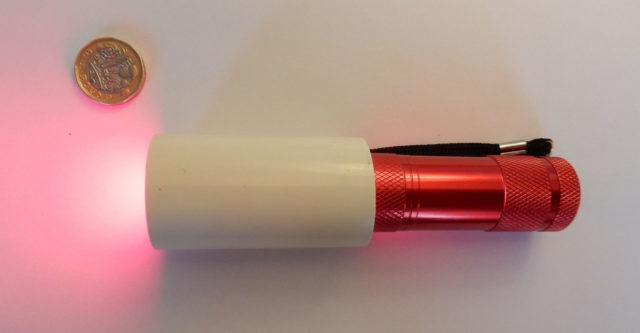Staring at a deep red light for three minutes a day can significantly improve declining eyes vision finds a new study, the first of its kind in humans.
A LED torch that emits deep red light and costs about $3.5 to make, could help improve declining eyesight, scientists at University College London have said in the first of its kind study in humans.
The study has shown that staring at long-wavelength light for three minutes a day can “significantly improve vision” in people aged 40 and over.
The findings, published in the Journal of Gerontology, claimes that it could pave the way for affordable home-based eye therapies.
Lead author Professor Glen Jeffery said, “As you age, your visual system declines significantly, particularly once over 40. Your retinal sensitivity and your color vision are both gradually undermined, and with an aging population, this is an increasingly important issue.” Prof Jeffery added. “To try to stem or reverse this decline, we sought to reboot the aging cells of the retina with short bursts of longwave light.”
According to the researchers, the pace of this aging is caused partly by the cell’s mitochondria, whose role is to produce energy (known as ATP) and boost cell function. ATP reduce by 70% over life causing a substantial decline in photoreceptor function as they lack the energy to perform their normal role.
Low light
Twenty-four people aged between 28 and 72, who had no ocular disease, participated in the study. Participants were given special LED torches to take home and were required to gaze into their deep red 670nm beam for three minutes a day for two weeks. They were then re-evaluated for color vision as well as for vision at low light levels.
Researchers found that 670nm light had no impact on younger individuals, but instead recharged the energy system for people over 40.
The ability to detect colors also improved by up to 20%. Improvements were more significant in the blue part of the color spectrum, which is more vulnerable in aging.
“The technology is simple and very safe, using a deep red light of a specific wavelength, which is absorbed by mitochondria in the retina that supply energy for cellular function.” Prof. Jeffery said.




